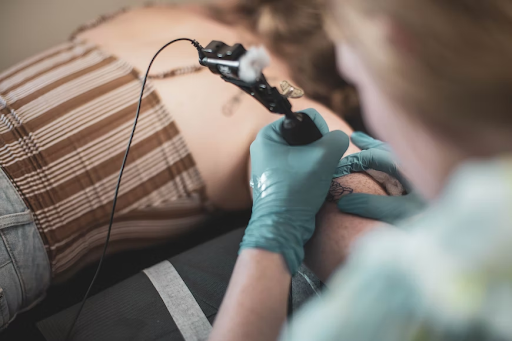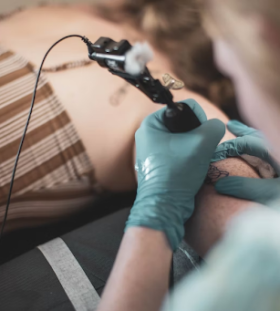The Best Tattoo Removal Methods: A Comprehensive Guide
Ink is forever, or so the saying goes. What if you change your mind about that tattoo you got a few years ago? Or your job requires you to cover up your tattoos. Whatever the reason, getting a tattoo removed can be a daunting process. There are many methods of tattoo removal available, but not all of them have the same effectiveness. This post will discuss the different tattoo removal methods and help you decide which one is for you!
Table of Contents
Overview: Tattoo Removal
Tattoo removal is removing a tattoo from the skin by breaking down the ink particles in the tattoo, safely removing them from the skin. Tattoo removal is often for aesthetic reasons, such as if someone no longer likes the look of their tattoo or wants to cover it up with another one or because of medical reasons, such as if a tattoo has become infected or is causing skin irritation.
Common Tattoo Removal Methods
There are ways to remove tattoos with varying degrees of success. Below are the most common techniques used for tattoo removal:
1. Laser tattoo removal
Laser tattoo removal offers minimal scarring and a high success rate, and you can expect results after several treatments. It is one of the most effective and safest techniques. The process may be painful as it uses high-intensity light that causes redness or discomfort during the procedure.
2. Surgical excision
Surgical excision is surgically cutting away a tattoo and stitching up the skin. It is an invasive procedure that requires anaesthesia and may leave a scar. As with laser removal, it can be expensive and may require multiple treatments for optimal results.
3. Dermabrasion
Dermabrasion involves using an abrasive tool to rub or scrape away the skin that contains the tattoo ink. This method can be painful and may require multiple treatments for optimal results. It also has a higher risk of infection than other methods.
4. Chemical peel
Chemical peeling is when an acid removes layers of skin os the tattoo ink’s location. It can be effective but also carries a risk of infection and skin damage.
5. Cryosurgery
Cryosurgery is the process of freezing a tattoo off. It may require multiple treatments, and it can have some side effects like blistering, scarring and loss of skin pigmentation.
6. Salabrasion
Salabrasion is when the tattoo is rubbed with salt water and then sanded down. This method can be painful and may require multiple treatments for optimal results. It can also leave scars or areas of uneven skin pigmentation.
7. Tattoo removal cream
Tattoo removal cream is a topical product rubbed onto the skin to break down ink particles. It can be effective but may require multiple treatments, and it can cause burning or redness of the skin.
Factors to consider when choosing a tattoo removal method

Tattoo size and location
The size and location of the tattoo will affect which removal method is best. Larger tattoos may require more treatments with some methods than smaller ones.
Tattoo colour and depth
The colour of your tattoo ink and the depth at which it was applied will determine the most effective removal method. Deeper tattoos may require more aggressive treatments, while lighter colours maybe with a laser or topical cream.
Personal preference
Some people prefer a surgical approach, while others are more comfortable with non-invasive techniques. Consider your comfort level and lifestyle when deciding on a removal method.
Cost
The tattoo removal cost depends on the type of treatment and the number of treatments required. Make sure to research the cost of different methods before making your decision.
Potential side effects
Different tattoo removal methods can have different side effects. Some common side effects may include scarring, redness, blistering and skin discolouration. Be sure to research all possible side effects before choosing a method.
Can Tattoos Be Completely Removed?
Most tattoos can be removed, but the success of a particular method may vary depending on factors such as size, location, and type of ink used. Some people may need several treatments for optimal results. While some removal methods are more effective than others, none have a 100% success rate in removing all ink traces from the skin. However, tattoos can lighten enough if desired to cover with a new tattoo.
Ask the Experts
If you consider removing a tattoo, you must consult a doctor or specialist. They can help you assess the best method for your situation and answer any questions. It’s also important to research all potential risks of each process before proceeding, as some methods may carry more risks than others.
The Bottom Line
Tattoo removal is possible, but the success depends on factors such as size, location of the tattoo and type of ink used. Multiple treatments may be necessary for optimal results; some methods carry more risks than others. Be sure to research all potential side effects before making a decision. Speak to a doctor or specialist if you’re considering tattoo removal to assess the best method for your situation.
I believe in creativity and try to express the same with my words. I enjoy writing and keeping myself in touch with the books.


